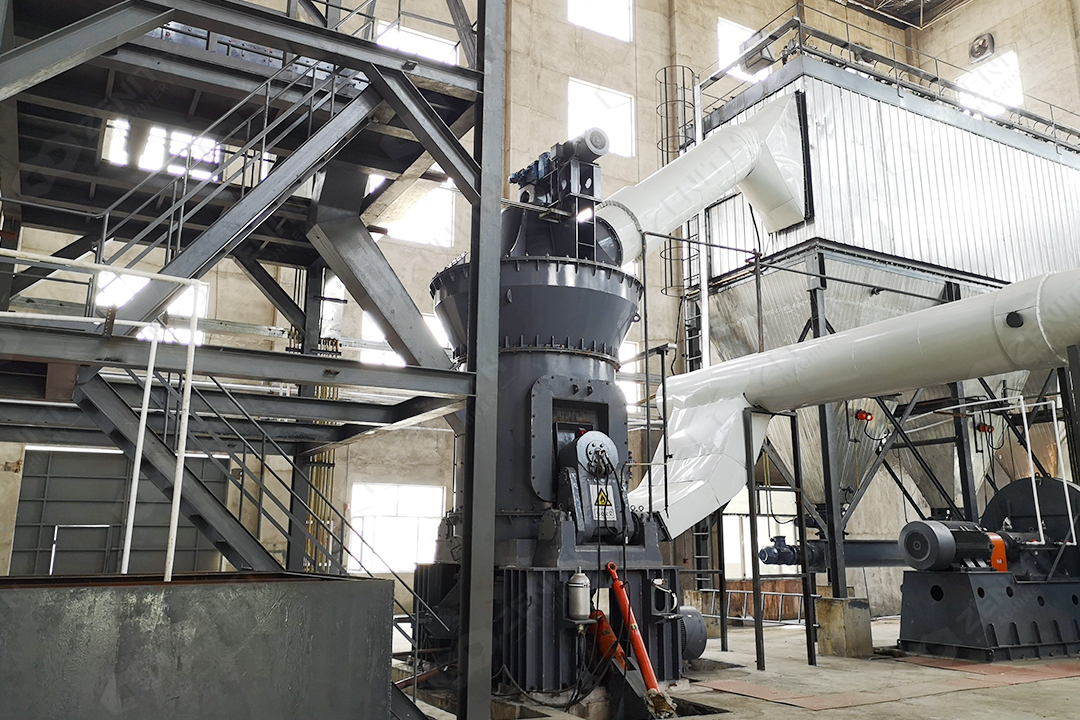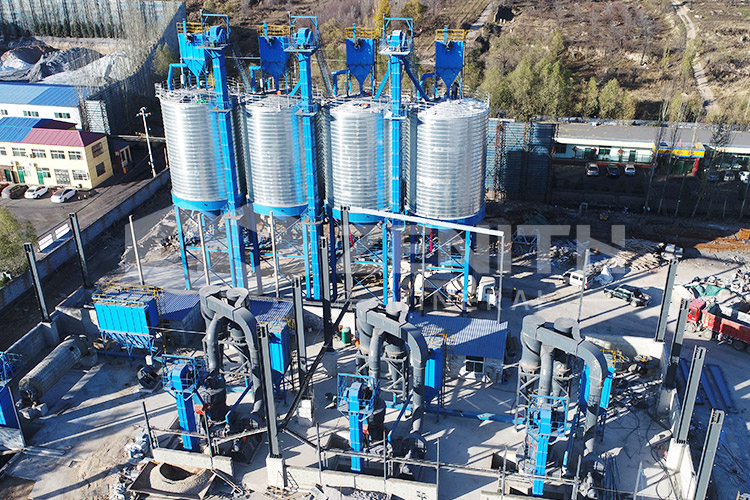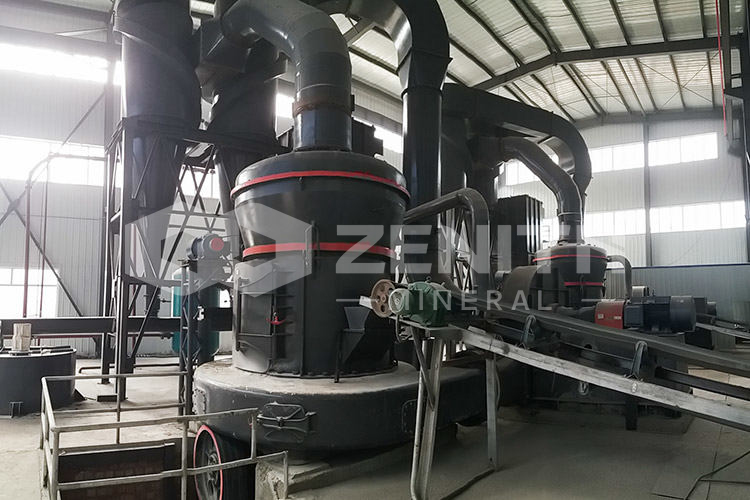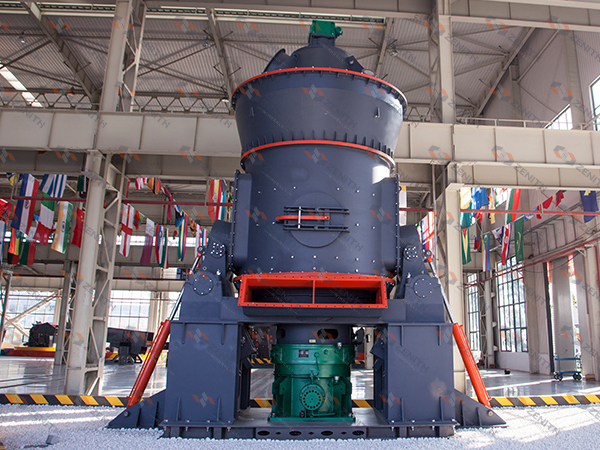Uses of bituminous coal grinding mill finished products: humic acid fertilizer
2025-11-09 15:26:50
In the realm of sustainable agriculture, humic acid fertilizers have emerged as a powerful tool for enhancing soil health and crop productivity. The production of high-quality humic acid fertilizer begins with the precise processing of its primary raw material: bituminous coal. At Shanghai Zenith Machinery, we specialize in providing industrial grinding solutions that transform raw bituminous coal into the fine powders essential for effective humic acid extraction and fertilizer formulation.
_1762673210941.jpg)
Bituminous coal contains significant concentrations of humic substances that, when properly processed, become bioavailable to plants. The grinding process is critical because it increases the surface area of coal particles, facilitating better chemical reactions during the humic acid extraction phase. Our grinding equipment ensures consistent particle size distribution, which directly impacts the efficiency of subsequent processing steps and the final quality of the humic acid fertilizer.
Optimal Grinding Solutions for Humic Acid Production
Different stages of humic acid fertilizer production require specific particle sizes, and Zenith's diverse grinding portfolio caters to these varying needs:
For initial coarse grinding of raw bituminous coal, our HM Series Hammer Mills efficiently process materials from 0-50mm down to 0-3mm coarse powder. This preliminary size reduction prepares the coal for more refined grinding processes while maintaining high throughput capacities of 3-50 T/H.
_1762673210944.jpg)
When medium-fine grinding is required, our MTW European Trapezium Mill produces powders ranging from 30-325 mesh with capacities up to 22 T/H. Its energy-efficient design consumes 60% less power than traditional ball mills, making it an economically viable solution for large-scale humic acid fertilizer production facilities. The adjustable fineness feature allows operators to fine-tune output specifications based on specific extraction requirements.
For operations demanding ultra-fine powders, the XZM Ultrafine Grinding Mill delivers exceptional performance, producing powders from 325 to 3000 mesh. This level of fineness is particularly valuable for creating highly soluble humic acid formulations that can be easily absorbed by plants. The mill's ability to achieve D97 < 5 micron at one time ensures superior extraction rates from the coal matrix.
Technical Advantages for Fertilizer Manufacturers
Our grinding systems offer several distinct advantages for humic acid fertilizer producers:
The LM Vertical Grinding Mill provides automated operation with 24-hour constant running capability, ensuring uninterrupted production cycles. Its compact integrated design reduces footprint requirements by approximately 50% compared to ball mill systems, while the sealed operation under negative pressure eliminates dust spillover – a crucial consideration for fertilizer production facilities concerned with workplace safety and environmental compliance.

Energy efficiency remains a cornerstone of our design philosophy. The MTM European Trapezium Mill, with over 30 years of practical application experience, delivers reliable performance while reducing energy consumption by more than 60% compared to conventional ball mills. This translates to significant operational cost savings for fertilizer manufacturers operating in competitive markets.
Working Principles Tailored for Bituminous Coal
The grinding process for bituminous coal requires specialized handling to maximize humic acid yield. Our mills employ sophisticated material handling systems that maintain consistent feed rates to the grinding chamber. The MTW series, for instance, utilizes a variable frequency belt feeder that ensures optimal material presentation to the grinding elements, preventing both overloading and underutilization.
Classification systems integrated into our grinding mills, such as the high-efficiency powder selectors in the MTW and MTM series, ensure precise particle size control. This is particularly important for humic acid production, where inconsistent particle sizes can lead to uneven extraction rates and variable fertilizer quality. The improved air induction efficiency (increased from 62% to 85%) in these systems enhances classification accuracy while reducing energy requirements.

Environmental considerations are integral to our mill designs. All our grinding systems operate with pulse dust collectors that meet international environmental standards, containing coal dust effectively throughout the grinding process. The negative pressure operation prevents fugitive emissions, protecting both workers and the surrounding environment.
Global Applications and Verification
Zenith's grinding equipment has been deployed in humic acid fertilizer production facilities across our global network spanning 180 countries and regions. The consistent performance of our mills under diverse operating conditions has been verified through ISO international quality system certification, European Union CE certification, and Customs Union CU-TR certification.
The versatility of our grinding range allows fertilizer producers to select equipment matching their specific production scale and quality requirements. From small operations using Raymond Mills with 3-22 T/H capacity to large-scale facilities employing LM Vertical Grinding Mills with capacities up to 340 T/H, we provide solutions that grow with our customers' businesses.
_1762673210953.jpg)
As the demand for organic and sustainable agricultural inputs continues to grow, the role of properly processed humic acid fertilizers becomes increasingly important. Through precise grinding technology that optimizes bituminous coal for maximum humic acid availability, Zenith Machinery supports the global agricultural community in developing more productive and environmentally responsible farming practices.
Frequently Asked Questions
What is the optimal fineness for bituminous coal in humic acid fertilizer production?
For most humic acid extraction processes, a fineness between 200-400 mesh provides the ideal balance between surface area and processing efficiency. Our MTW and MTM European Trapezium Mills are particularly well-suited for this range.
How does grinding fineness affect humic acid yield?
Finer grinding increases the surface area of coal particles, which enhances the extraction efficiency of humic substances. However, excessively fine grinding may increase energy consumption without proportional yield benefits. Our equipment allows precise control to find the optimal balance.
Can Zenith grinding mills handle the abrasive nature of bituminous coal?
Yes, our mills feature wear-resistant materials in critical components. The grinding rollers and rings in our MTW and MTM series utilize high-quality abrasion-resistant materials specifically designed to withstand the abrasive characteristics of bituminous coal.
What capacity range do you offer for humic acid fertilizer production?
We provide solutions from small-scale (3 T/H) to large industrial operations (340 T/H). The LM Vertical Grinding Mill offers the highest capacity for large-scale production, while Raymond Mills serve smaller operations effectively.
How does your equipment ensure consistent product quality?
Our mills incorporate advanced classification systems with efficiency rates up to 99%, ensuring uniform particle size distribution. The automated control systems maintain stable operating parameters, resulting in consistent output quality batch after batch.
What environmental features do your grinding mills include?
Our systems operate under negative pressure with pulse dust collectors, preventing dust emissions. The sealed designs contain particles effectively, while the energy-efficient operation reduces carbon footprint compared to traditional grinding methods.
Do you provide technical support for setting up grinding systems for humic acid production?
Yes, with overseas offices in more than 30 countries, we provide comprehensive technical support including process design, installation supervision, operator training, and ongoing maintenance services tailored to humic acid fertilizer production requirements.








